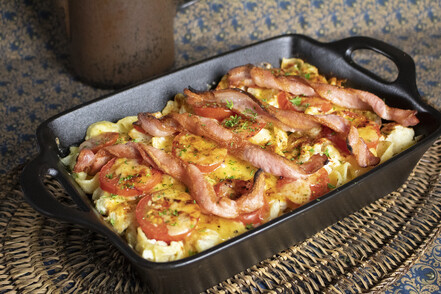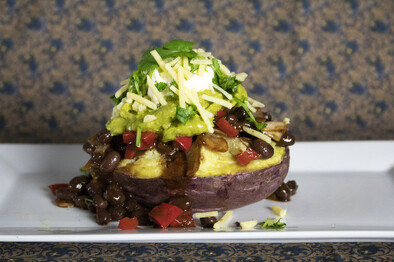Versatile cauliflowers have become firmly established as the darlings of the vegetable lovers’ society. In recent times they’ve been: ‘riced’, cut into veggie steaks, roasted whole, mashed, stir-fried and ‘souped’ up. “The advantage of the cauliflower is that if all else fails, you can always cover it with melted cheese and eat it.” William E. Simon, American businessman and philanthropist.
Caulis are an excellent source of vitamin C and a good source of vitamin K and folate. They also contain fibre, B vitamins, plus several other vitamins and minerals and only five carbs per 100grams. Cauli is a member of the brassica family that is thought to inhibit some cancers.
However, as with cabbages, caulis aren’t popular when reheated. The brassica flavour tends to dominate the dish.
Carrots are native to Afghanistan and early varieties were purple. It wasn’t until the 17th century that the orange carrot was developed in the Netherlands. Choose medium-sized, smooth-skinned, brightly coloured carrots. Large, thick carrots tend to be tough and have less flavour.
The kumara is a tuber, the thick rounded part of a rhizome (underground stem) that stores the plant's food. No wonder they're so good for us. They’re packed with more vitamins C and E (antioxidants) than potatoes, pasta and rice and are a very good source of fibre and potassium.
CAULI & PASTA CHEESE
Orecchiette resemble little ears.
2 cups orecchiette or small spiral pasta
1 small cauliflower, cut into 3cm florets
250g sour cream
1/2 cup milk
1 tablespoon Dijon-style mustard
2 cups grated tasty cheddar cheese
2 medium tomatoes, sliced
4-6 rashers streaky bacon
Bring a large saucepan of water to the boil. Add the pasta and boil for 5 minutes. Add the cauli florets and boil for about 8 minutes, until the cauli and pasta are al dente. Drain well.
Add the sour cream, milk, mustard and 2/3 of the cheese. Stir over low heat until the cheese begins to melt. Tip into a baking dish. Top with the sliced tomatoes and sprinkle with the remaining cheese
Meanwhile, preheat the grill. Twist each slice of the bacon and place on a small oven rack. Grill until crispy.
Place on top of the pasta mixture and grill until golden and bubbling. Serves 6.
CARROT & FETA FRITTERS
I used goat’s feta.
300g carrots, peeled and shredded
1/2 teaspoon ground coriander
4 spring onions, finely chopped
200g feta cheese, crumbled
1/2 bunch coriander leaves and stalks, chopped
1 large egg
2 tablespoons self-raising flour
1/4 cup olive oil
Topping: sliced avocado, microgreens, lemon wedges
Combine the carrots, coriander, spring onions, feta, chopped coriander, egg and flour in a bowl.
Heat a tablespoon of oil in a non-stick frying pan on medium heat. Take a 1/4 cup of the carrot mixture to form a fritter. Cook about 3-4 at one time.
Cook 2-3 minutes each side until golden. Keep warm in a 100°C oven. Repeat with the remaining mixture.
Top with avocado, microgreens and lemon wedges. Great served with crusty bread if preferred. Serves 4 as a light meal.
LOADED KUMARA
olive oil
2 large purple-skinned kumara, halved lengthwise
1 small onion, diced
1 small red capsicum, diced
1 teaspoon each: ground cumin, smoked paprika, dried oregano
390g can black beans in chilli sauce
Toppings: 1 avocado, stoned, peeled and mashed (or guacamole)
1/2 cup each: sour cream, grated tasty cheddar cheese
1/4 cup chopped coriander leaves
Lightly brush the kumara with oil. Wrap each one loosely in baking paper. Microwave on high power for 8-10 minutes, until the kumara are tender when tested with a skewer. Remove and cool a little.
Meanwhile, heat a tablespoon of oil in a frying pan. Sauté the onion until softened. Add the red capsicum and sauté until softened. Add the seasonings and chilli beans and simmer for about 5 minutes.
Lay the kumara halves — skin-side down — on a plate. Cut a cross in the flesh and squeeze the kumara to loosen the flesh. Spoon the bean mixture over the kumara then garnish with the toppings. Serves 4.


